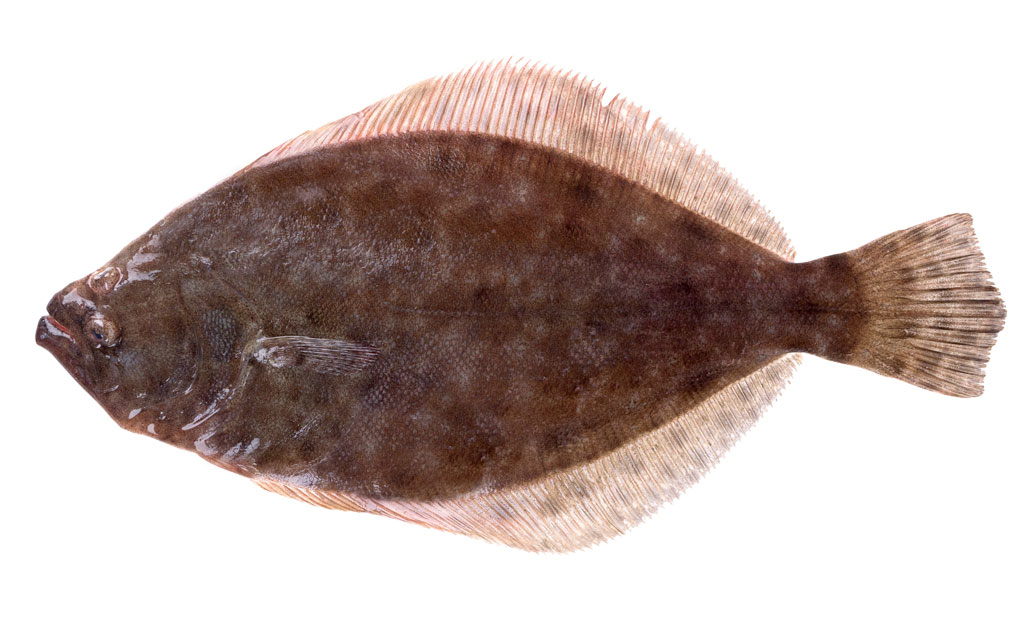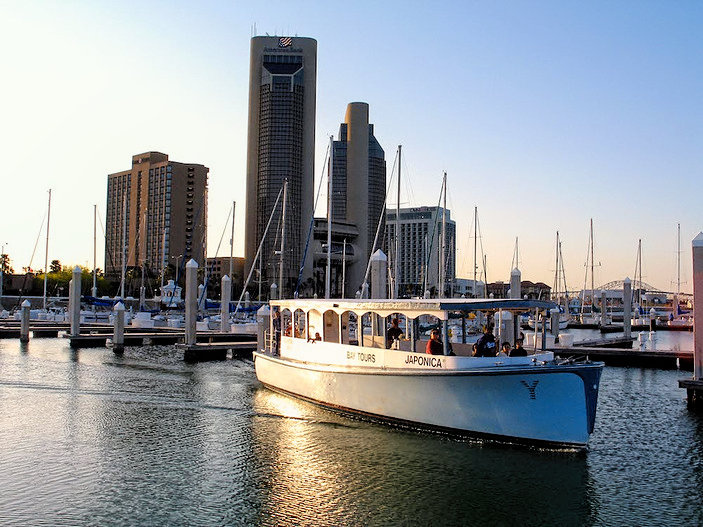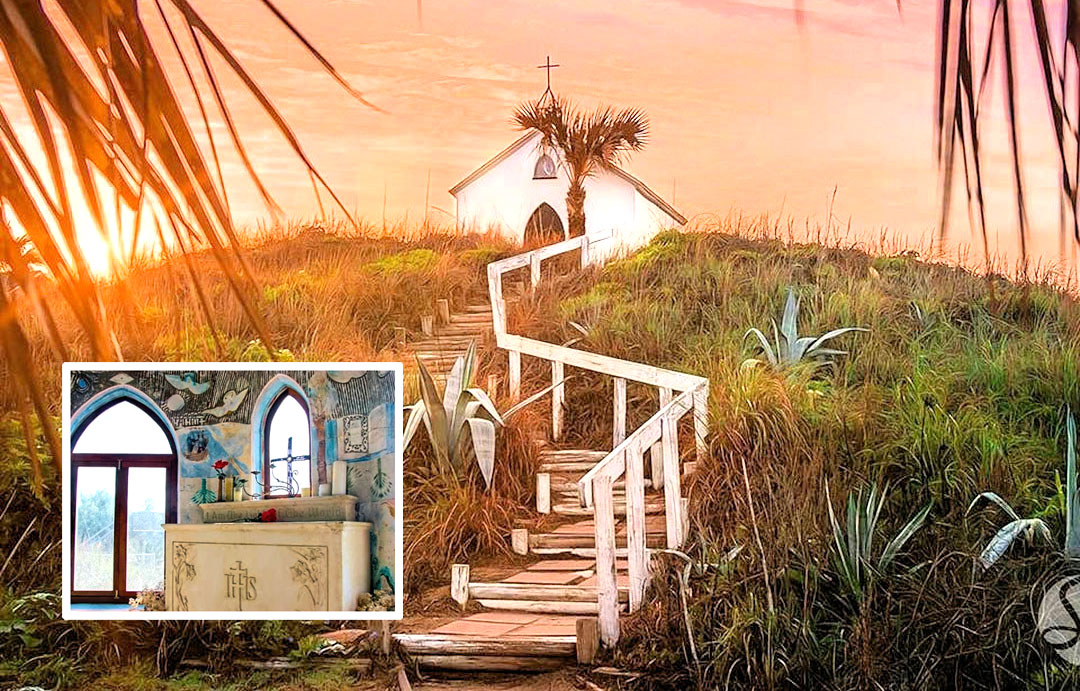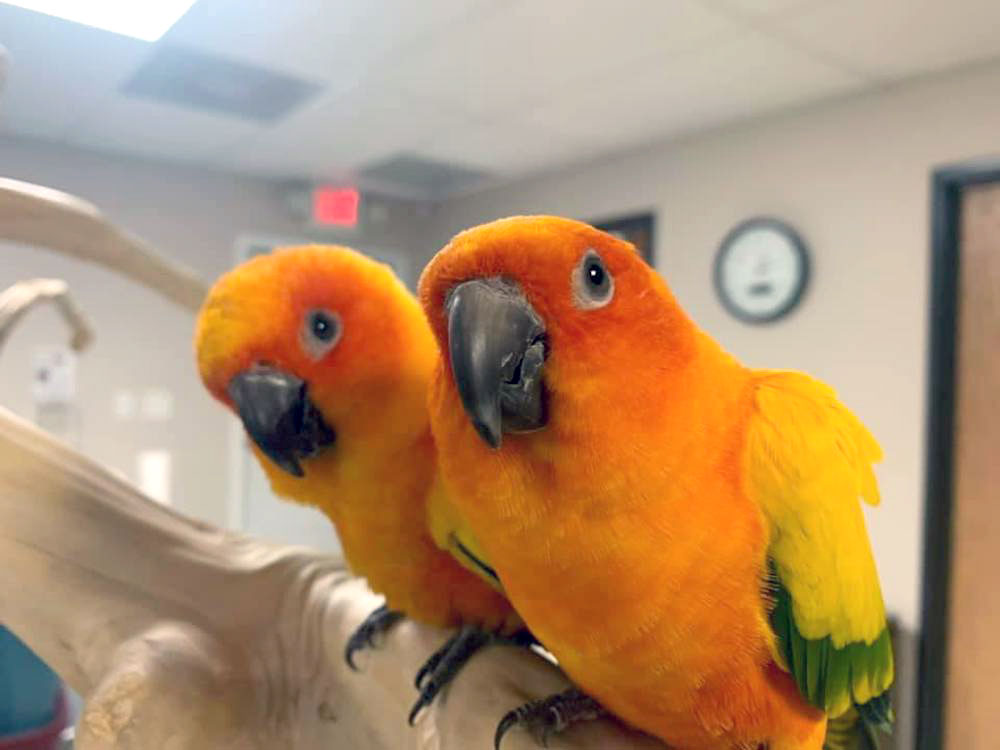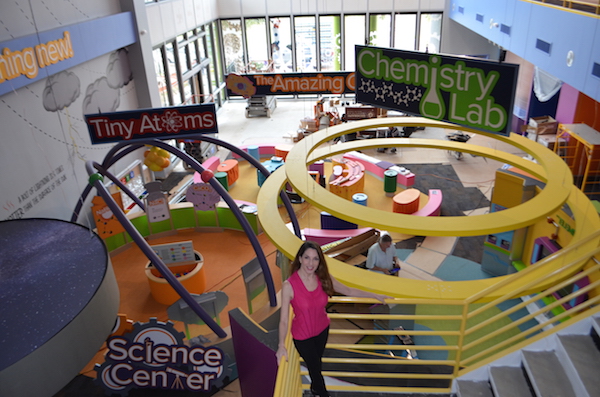
Carol Rehtmeyer, executive director of the Corpus Christi Museum of Science and History, in front of the new Science Center exhibit, which is still under construction. The completed center will be unveiled to the public in April. Photo by Jane Kathleen Gregorio
A DNA double-helix three stories high, a mammal cell big enough to walk through, a space vortex and a staircase of piano keys that lights up and makes music with each step. All are part of the newest addition to the Corpus Christi Museum of Science and History, which will be open to the public in April.
The Science Center is the dream child of executive director Carol Rehtmeyer, who began working on the concept two years ago with the help of a museum design team. It occupies about 5,000 square feet of the 40,000-square-foot museum and cost about $3 million, all of which came from private funds donated by the Friends of the Museum.
“Its purpose is to educate and engage children of all ages and learning levels, including adults, about the sciences from micro to macro,” Rehtmeyer. “We thought it was important for kids to have something that would help cultivate an interest and fascination with science.”
Aimed at creating an exciting learning environment, the center provides hands-on, interactive experiences that teache science and math through play. Rehtmeyer hopes the center will help raise local test scores in math and science, which in Corpus Christi regularly fall below national averages.
“We believe that if kids are excited about education, they’ll have confidence in learning,” she said. “That confidence can help them become successful learners for life.”
BIGGER THAN LIFE
On first entering the Science Center, visitors are greeted with an atom exploration area, which kicks off the micro aspect of science. Using colored balls to represent various atoms, children can assemble them into molecules.
“The Tiny Atom exhibit shows users how molecules make up objects,” Rehtmeyer said. “We have a very physically inclined exhibit for the younger kids and more sophisticated ones for the older kids in each of the areas.”
This grow-with-me concept enables each age to learn from their experiences so visitors take home something new with each visit.
Next to Atom Exploration stands a virtual chemistry lab with an enlarged Periodic Table of Elements. By touching each element on the chart, users can learn what materials the elements make.
“In the virtual chemistry lab, you can select items from the Periodic Table of Elements and mix them with others to create a reaction,” Rehtmeyer said. “If it doesn’t create a reaction, then the user will be prompted to add the appropriate element.”
Beyond the atomic experience is a larger-than-life replica of a mammal cell that visitors can actually walk into.
“There’s a giant Gogi apparatus, mitochondria and all the components of a cell that, if you touch, will talk back and explain their functions,” Rehtmeyer said. “We have fat cell costumes that children can put on so they can learn what happens to cells when they’re affected by unhealthy eating habits. At a young age, we want kids to learn about good nutrition and why taking care of our bodies is important.”
The center of the room contains a three-story DNA double-helix that extends to the ceiling. Attached are a balcony and a catwalk. Kids will be able to climb and slide through the structure, which connects the first and second floors. At the bottom of the DNA strand will be interactive games designed to teach visitors about amino acids and how the DNA selection process takes place.
Other features of the Science Center include:
• corresponding notepads throughout each area to show children which career paths are available in those particular science and math fields;
• an interactive math center that teaches division and cancellations;
• a giant scale on which users can place geometric objects to learn about mass versus density;
• an engineering area that explores Newton’s three laws of physics.
“This area will consist of a giant ballerina that can be turned by gears as the user pedals on a small bike,” Rehtmeyer explained.
Other engineering marvels will include a giant Newton’s Cradle made from giant bowling balls and simple pulley machines that can lift a giant piano, a motorcycle and a bowling ball.
In another corner, in the macro section of the Science Center, a space vortex lights up and leads to outer space and activities that pertain to gravity and magnetism.
“We have a climbing wall and a hands-on experiment comparing the differences between gravity on Earth, Mars and Jupiter,” Rehtmeyer said.
The Space Center will also include a small planetarium to showcase presentations from NASA and an activity that lets users test for sound in outer space.
A Jurassic area showcases the dinosaur world.
“There’s a projection against the wall that your hands can interact with, and visitors can control and manipulate the three-dimensional-rendered dinosaur graphics,” Rehtmeyer said. “It makes you feel like you’re entering that world, and the user can make the dinosaurs move, eat or growl.”
A piano staircase with steps that light up and play music, tops off the area. The piano was designed by the same person who created the life-size piano in the film ‘Big’ starring Tom Hanks.
Just outside the Science Center, a doorway leads to an outdoor playground with a picnic area.
“We’re bringing in giant musical instruments that visitors can actually play,” she said. “We’re calling the outside area the Musical Garden.”
The museum has two openings planned for the new exhibit. The first, on March 5, will be for invited guests and the media. About 85 percent of the exhibit will be completed at that time. The official grand opening will take place April 1 when everything will be ready for the public.
MORE TO COME
Once the Science Center is completely paid for, Rehtmeyer and her team have other exciting plans for future projects. The main one involves the outside area where replicas of two of Columbus’ ships were once docked. In grave disrepair, the ships were dismantled and removed last year. The museum plans to build a Science Physics Park and Water Garden in the area.
“Visitors will be able to learn about physics against a beautiful backdrop of lighted waterfalls with projections on them,” Rehtmeyer said.
Another project planned for different side of the museum will be dedicated to an Oil, Gas and Alternative Energy exhibit, similar to one at the Epcot Center in Orlando, Florida.
As a community museum, Rehtmeyer pointed out several ways Coastal Bend residents can help support the facility. Anyone can become a member of the museum, which provides free admission throughout the year along with free or reduced fees for special events.
“For those who have funds available to give, we’re always looking for financial support,” Rehtmeyer said.
One hundred percent of dollars donated go to the development of these areas and provide experiences for disadvantaged children as well as scholarship programs.”
With the building of the Science Center, Rehtmeyer hopes the next generation will feel more excitement about learning beyond the classroom.
“If we can foster a lifetime love of learning and even inspire the young ones to pursue career paths in science and math, then we’ve accomplished our mission,” Rehtmeyer said.
The Corpus Christi Museum of Science and History is located at 1900 N. Chaparral St. For more information, call (361) 826-4667 or visit www.ccmuseum.com.

